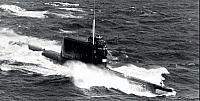WILHELM GUSTLOFF
L’Ammiraglio Karl Doenitz, agli inizi del 1945, concepì e mise in atto l’Operazione Hannibal, che doveva permettere di mettere in salvo la popolazione civile della Prussia orientale dall'avanzata dell'Armata Rossa. Si calcola che circa tre milioni di persone cercarono di fuggire da quei territori, verso ovest, in cerca di salvezza.
Alle 12,30 del 30 gennaio 1945 la ex nave da crociera Wilhelm Gustloff lasciava il porto di Gotenhafen-Oxhoeft (oggi Gdynia), nei pressi di Danzica, stracolma di profughi, per lo più donne,
bambini e anziani. Nel caos generale si erano imbarcate circa undicimila persone su una nave costruita per trasportare meno di duemila.
All’uscita dal porto, la Gustloff fu intercettata e seguita dal sottomarino sovietico S-13 del Capitano Alexander Marinesko. Alle 21,10 il primo di tre siluri colpiva sulla sinistra la prua della nave che dopo circa cinquanta minuti si inabissava nelle gelide acque del Mar Baltico.
Si salvarono solo 996 naufraghi.
Il relitto della Wilhelm Gustloff giace in acque internazionali a largo delle coste dell’attuale Polonia, nel tratto di mare tra il bassofondo dello Stolpe-Bank e l’isola danese di Bornholm alla profondità di 50mt.
Alle immersioni su questo relitto hanno partecipato undici istruttori e subacquei IANTD, con generali condizioni meteomarine avverse, per un totale di 60 ore di immersione , in ambiente subacqueo con limitata visibilità, ad una temperatura di 2,5° C.
The admiral Karl Doenitz, early 1945, planned and carried out the Hannibal Operation, which should have allowed the evacuation of the civil German people of the East Prussia protecting them from the Red Army advance. About three millions people were estimated to seek safety in a flight from this eastern region towards the west. At 12.30 on January 1945 the former cruise ship Wilhelm Gustloff left Gotenhafen-Oxhoeft (today Gdnya) port, near Damzica (Gdank), overflowing with refugees, mainly women, children and old. Because the chaos were embarked about eleven thousand people on a ship built to carry less two thousand. Leaving the port, the Gustloff was intercepted and followed by the Soviet submarine S-13 of Captain Alexander Marinesko. At 21.10 the first of three torpedoes shoot on the left the bow that after about fifty minutes sunk into the frosty water of the Baltic Sea. Only 996 survivors were saved. The wreck of Wilhelm Gustloff lies into international waters off the coasts from the today Poland, in the sea between shallow water Stolpe-Bank and the Danish island Bronholm 50 m deep. Eleven IANTD instructors and divers took part to the dives on this wreck, in bad weather and sea conditions for about 60 diving hours, in an underwater environment with low visibility and water temperature of 2.5 C.
Alle 12,30 del 30 gennaio 1945 la ex nave da crociera Wilhelm Gustloff lasciava il porto di Gotenhafen-Oxhoeft (oggi Gdynia), nei pressi di Danzica, stracolma di profughi, per lo più donne,
bambini e anziani. Nel caos generale si erano imbarcate circa undicimila persone su una nave costruita per trasportare meno di duemila.
All’uscita dal porto, la Gustloff fu intercettata e seguita dal sottomarino sovietico S-13 del Capitano Alexander Marinesko. Alle 21,10 il primo di tre siluri colpiva sulla sinistra la prua della nave che dopo circa cinquanta minuti si inabissava nelle gelide acque del Mar Baltico.
Si salvarono solo 996 naufraghi.
Il relitto della Wilhelm Gustloff giace in acque internazionali a largo delle coste dell’attuale Polonia, nel tratto di mare tra il bassofondo dello Stolpe-Bank e l’isola danese di Bornholm alla profondità di 50mt.
Alle immersioni su questo relitto hanno partecipato undici istruttori e subacquei IANTD, con generali condizioni meteomarine avverse, per un totale di 60 ore di immersione , in ambiente subacqueo con limitata visibilità, ad una temperatura di 2,5° C.
The admiral Karl Doenitz, early 1945, planned and carried out the Hannibal Operation, which should have allowed the evacuation of the civil German people of the East Prussia protecting them from the Red Army advance. About three millions people were estimated to seek safety in a flight from this eastern region towards the west. At 12.30 on January 1945 the former cruise ship Wilhelm Gustloff left Gotenhafen-Oxhoeft (today Gdnya) port, near Damzica (Gdank), overflowing with refugees, mainly women, children and old. Because the chaos were embarked about eleven thousand people on a ship built to carry less two thousand. Leaving the port, the Gustloff was intercepted and followed by the Soviet submarine S-13 of Captain Alexander Marinesko. At 21.10 the first of three torpedoes shoot on the left the bow that after about fifty minutes sunk into the frosty water of the Baltic Sea. Only 996 survivors were saved. The wreck of Wilhelm Gustloff lies into international waters off the coasts from the today Poland, in the sea between shallow water Stolpe-Bank and the Danish island Bronholm 50 m deep. Eleven IANTD instructors and divers took part to the dives on this wreck, in bad weather and sea conditions for about 60 diving hours, in an underwater environment with low visibility and water temperature of 2.5 C.
-
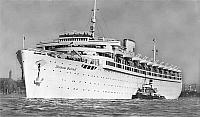
WILHELM GUSTLOF…
-
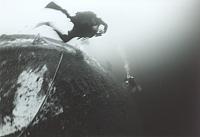
WILHELM GUSTLOF…
-
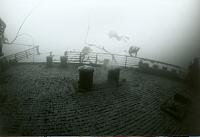
WILHELM GUSTLOF…
-
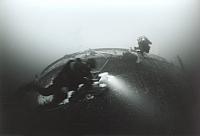
WILHELM GUSTLOF…
-
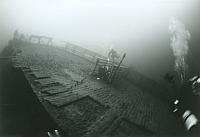
WILHELM GUSTLOF…
-
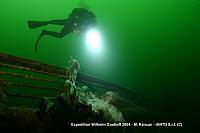
WILHELM GUSTLOF…
-
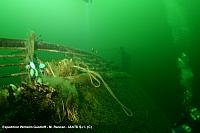
WILHELM GUSTLOF…
-
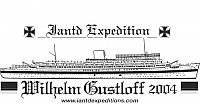
Wilhelm Gustlof…
- Primo Precedente
- Foto 1 - 8 di 8
- Prossimo Ultimo
